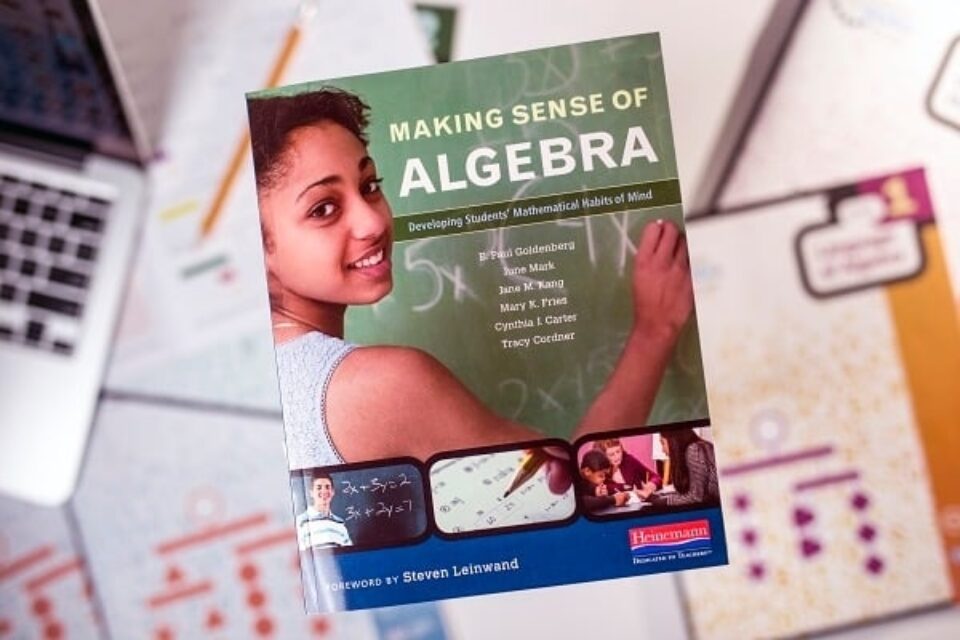
Precise and thoughtful communication supports both correctness and clarity.
In Making Sense of Algebra, Paul Goldenberg, June Mark, and their colleagues look carefully at how our students think about mathematics. They explore five “Habits of Mind” that focus not just on the results of mathematical thinking, but on how proficient students do that thinking.
In today’s blog, which is the last one in a series of five adapted from the book, the authors talk about the habit of communicating with precision.
Habits of Mind: Communicating with Precision
By Paul Goldenberg, June Mark, Jane Kang, Mary Fries, Cynthia Carter, and Tracy Cordner
The habit of striving for clarity, simplicity, and precision in both speech and writing is of great value in any field. In casual language, we are used to using context and people’s reasonable expectations to disambiguate communication so that we don’t burden our communication with specifics and details that the reader/listener probably can be expected to surmise anyway. But in mathematics, we need to base each new idea logically on earlier ones; to do so “safely,” we must not leave room for ambiguity. Mathematics, in which such precision in communication is essential, is a good training ground for clarity. Communication is hard; it takes years to learn how to be precise and clear, and the skill often eludes even highly educated adults. If the teacher and curriculum serve as the “native speakers” of clear mathematics, students can learn the language from them.
Defining terms is important, but children (and, to a lesser extent, even adults) almost never learn new words effectively from definitions. Virtually all vocabulary is acquired from use in context. Children build their own working definitions based on their initial experiences. Over time, as they hear and use these words in other contexts, they refine working definitions, making them more precise. For example, baby might first use dada for all men, and only later for one specific man. In mathematics, too, students can work with ideas without having started with a precise definition. With experience, the concepts become more precise, and the vocabulary with which we name the concepts can, accordingly, carry more precise meanings.
For learners, precision is also a way to come to understanding. By forcing their insight into precise language (natural language or the symbols of mathematics), they come to understand it better themselves.
For teachers in a class, this kind of clarity is important so that students understand exactly what a question means. Incorrect answers in class, or dead zones when students seem baffled and can’t answer at all, are often the result of not being sure what question was asked, rather than not understanding how to answer it.
Clarity comes from developing a variety of subskills:
- Use familiar vocabulary to help specify which object(s) are being discussed—which number or symbol or feature of a geometric object—using specific attributes, if necessary, to clarify meaning. For example, compare pointing at a rectangle from far away and saying, “No, no, that line, the long one, there,” with saying, “The vertical line on the right side of the rectangle.”
- Use written symbols correctly. In particular, the equal sign (=) is used only between complete expressions, and it signals the equality of those two expressions. Also, the equal sign must not be misused to mean “corresponds to”: writing “4 boys = 8 legs” is incorrect. Likewise, greater than (>) and less than (<) symbols are used only between complete expressions.
- In writing numerical answers or speaking about quantities within problems, specify the nature and units of quantities whenever that is relevant. The purpose of precision is never to create work, only to create clarity. Sometimes a number is clear by itself, other times a unit is needed, sometimes a whole sentence is required: the situation determines the need.
- Label graphs and diagrams sufficiently to make their meaning and, if necessary, the meanings of their parts completely clear to the reader. As students develop mathematical language, they learn to use algebraic notation to express what they already know and to translate among words, symbols, and diagrams. Possibly the most profound idea is giving names to objects. When we give numbers names, not just values, then we can talk about general cases and not just specific ones.
Clear communication requires the refinement of academic language as students explain their reasoning and solutions. Along with some new, specifically mathematical vocabulary, this includes the use of quantifiers (all, some, always, sometimes, never, any, for each, only, etc.), combination and negation (not, or, and), and conditionals (if…then…, whenever, if not, etc.).
♦ ♦ ♦ ♦
 Paul Goldenberg, June Mark, Jane Kang, Mary Fries, and Tracy Cordner work in the Learning and Teaching Division at Education Development Center (EDC), a non-profit organization that designs, implements, and evaluates programs to improve education, health, and economic opportunity worldwide. Cynthia Carter is a mathematics teacher at The Rashi School in Massachusetts.
Paul Goldenberg, June Mark, Jane Kang, Mary Fries, and Tracy Cordner work in the Learning and Teaching Division at Education Development Center (EDC), a non-profit organization that designs, implements, and evaluates programs to improve education, health, and economic opportunity worldwide. Cynthia Carter is a mathematics teacher at The Rashi School in Massachusetts.


